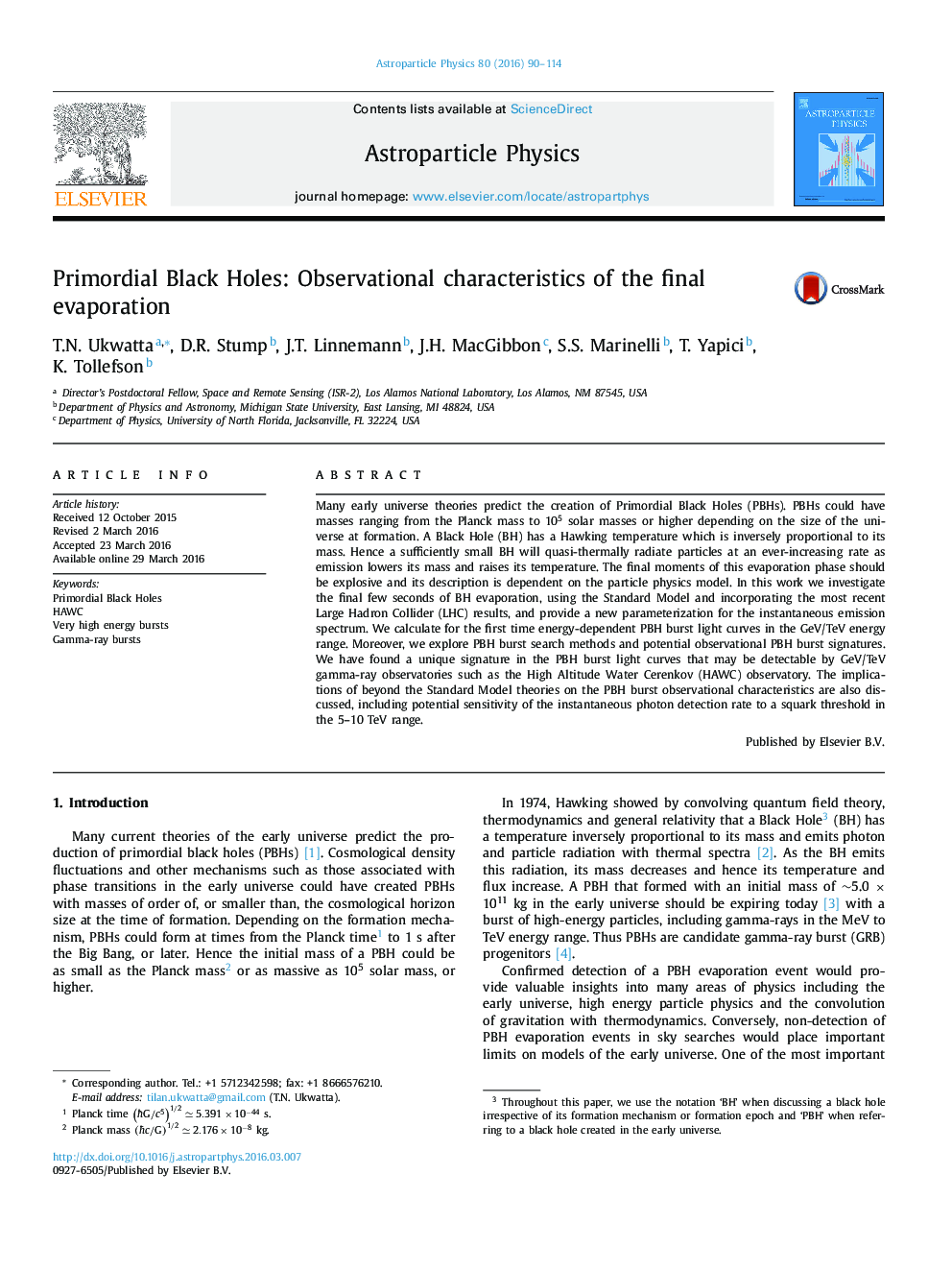| کد مقاله | کد نشریه | سال انتشار | مقاله انگلیسی | نسخه تمام متن |
|---|---|---|---|---|
| 1770435 | 1523346 | 2016 | 25 صفحه PDF | دانلود رایگان |
Many early universe theories predict the creation of Primordial Black Holes (PBHs). PBHs could have masses ranging from the Planck mass to 105 solar masses or higher depending on the size of the universe at formation. A Black Hole (BH) has a Hawking temperature which is inversely proportional to its mass. Hence a sufficiently small BH will quasi-thermally radiate particles at an ever-increasing rate as emission lowers its mass and raises its temperature. The final moments of this evaporation phase should be explosive and its description is dependent on the particle physics model. In this work we investigate the final few seconds of BH evaporation, using the Standard Model and incorporating the most recent Large Hadron Collider (LHC) results, and provide a new parameterization for the instantaneous emission spectrum. We calculate for the first time energy-dependent PBH burst light curves in the GeV/TeV energy range. Moreover, we explore PBH burst search methods and potential observational PBH burst signatures. We have found a unique signature in the PBH burst light curves that may be detectable by GeV/TeV gamma-ray observatories such as the High Altitude Water Cerenkov (HAWC) observatory. The implications of beyond the Standard Model theories on the PBH burst observational characteristics are also discussed, including potential sensitivity of the instantaneous photon detection rate to a squark threshold in the 5–10 TeV range.
Journal: Astroparticle Physics - Volume 80, July 2016, Pages 90–114
